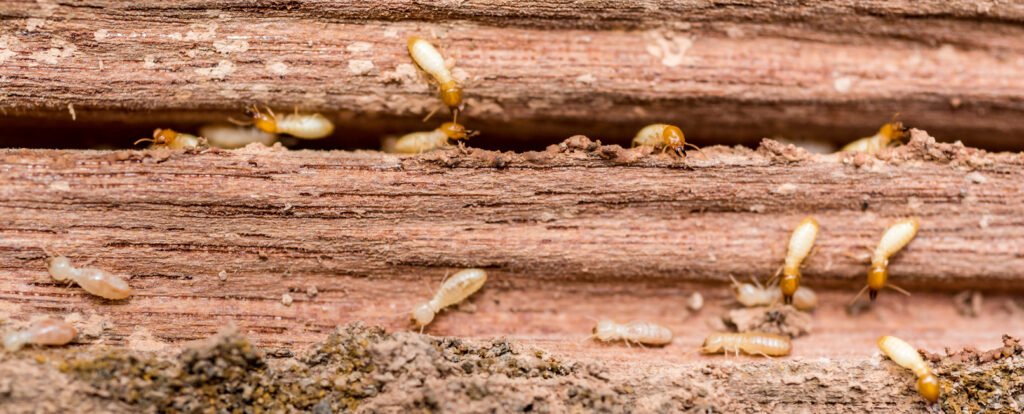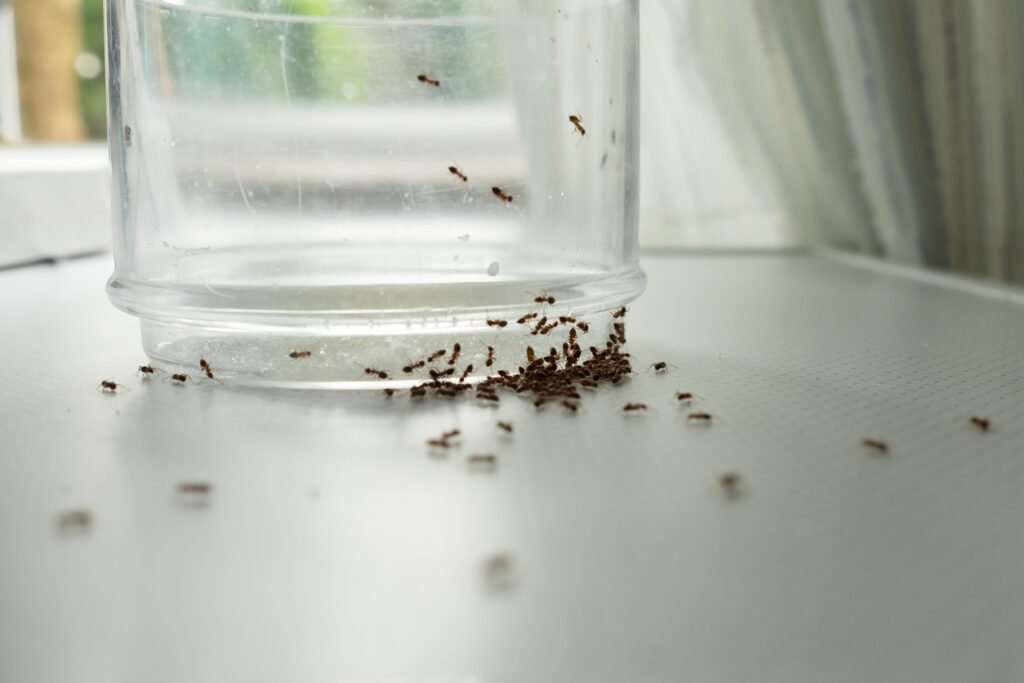
Intro
Dealing with the most common household pests can be a nightmare, especially when you don’t even know what you’re up against. In this post, we’ll introduce you to the top 10 household pests and provide some DIY pest control tips on how to identify and handle these uninvited guests.
Getting Acquainted with Common Household Pests
Familiarizing yourself with the usual pests that invade your living space is the preliminary step in effective DIY pest control. Your home can become a sanctuary for a wide spectrum of pests, from diminutive bugs to larger critters.
Some merely cause irritation or inconvenience, while others have the potential to present considerable health hazards or inflict damage on your residence. From disease-carrying insects to rodents that wreak havoc on your property, knowing what you’re up against is key.
Understanding their behaviors, habitats, and identifying features can help you design an effective strategy for dealing with them. So, let’s dive in and start recognizing these unwelcome invaders.
Destructive and Noisy: Recognizing Termites

Termites are insidious invaders that can cause significant damage to your home’s structure. These small, pale, and soft-bodied insects are known for their appetite for wood, consuming anything from furniture to the very foundations of your home.
Termites live in large colonies and can be recognized by the mud tubes they build for traveling and the tiny, pellet-like droppings they leave behind. You might also notice a hollow sound when you tap on wooden structures in your home, a clear sign of termite infestation.
While the signs may seem subtle, do not underestimate these tiny pests; their slow but steady destruction can lead to severe structural damage over time. So, be vigilant and act promptly at the first signs of their presence.
Health Hazard: Identifying Cockroaches

Cockroaches, the notorious carriers of various diseases, are a prevalent health risk and easily fall into the category of the most common household pests. These pests have an unmistakable oval shape, are equipped with six legs and exhibit long antennas.
They thrive in environments that are dark and damp, making your kitchen and bathroom their potential headquarters. While their physical characteristics can be a tell-tale sign of their presence, be on the lookout for their droppings, which resemble coffee grounds or black pepper.
Cockroach egg cases, known as oothecae, are another clear sign of infestation. These small, oblong casings are often found in areas where food and water are readily available. If you see one or more of these signs, act swiftly to curb their numbers and prevent the spread of diseases. Remember, an ounce of prevention is worth a pound of cure.
Frequent Flyers: Dealing with Houseflies

Houseflies are more than just a common nuisance, they pose a serious threat to health due to their ability to carry and spread diseases.
They multiply at an alarming rate, making quick and decisive action essential when dealing with an infestation. Spotting adult flies buzzing around your home is an obvious sign you’ve got an issue.
However, they are also known to lay eggs in rotting organic matter, so don’t forget to check your trash cans and compost bins. The presence of small, cream-colored larvae, commonly known as maggots, is another clear indicator of a housefly infestation.
Unlike some other pests, houseflies are often active during the day, especially in warmer weather, so sightings can be common. Although houseflies don’t damage your home in the way some pests can, their potential to spread diseases makes them a pest you’ll want to deal with promptly.
The Itchy Reality: Spotting Bedbugs

Bedbugs, despite their small stature, are a significant pest due to their blood-sucking habits. These miniature menaces are flat, and bear a reddish-brown color, allowing them to hide easily within mattresses, furniture crevices, and disorganized spaces.
Evidence of their presence often comes in the form of red, itching welts on the skin, typically noticed upon waking. Another indication of bedbugs is the appearance of small blood smears or spots on your bed sheets, which result from them feeding.
These cryptic critters are nocturnal, so they are most active when you’re asleep, which can make spotting them a challenge.
Therefore, knowing these signs of their presence is key to identifying an infestation. Should you notice these signs, quick action is advised to prevent their numbers from escalating.
Don’t Let the Bedbugs Bite: Recognizing Fleas

Fleas, a common pest to both humans and animals, are notorious for their biting habits and fast reproduction. Their small size and dark reddish-brown color can make them a challenge to spot.
However, their impressive jumping skills, covering distances many times their body size, often give them away. Pets that frequently scratch or bite at their fur are often a telltale sign of flea presence.
Another common indicator is the occurrence of small, itchy bites on the human occupants, typically concentrated around the lower legs and ankles.
Flea dirt, tiny dark spots composed of dried blood and fecal matter, is another sign to look out for. These spots can often be found where your pets sleep or spend a lot of time.
The ability to recognize these signs of infestation is essential in addressing a flea problem before it gets out of hand.
Pantry Pests: Identifying Weevils

The invasion of weevils, a type of small beetle, often goes unnoticed until you find them floating in your flour or cereal. These pantry pests have distinct elongated snouts and are typically brown or black.
More than their physical appearance, their habitat gives them away: they’re most likely to be found inside unsealed food packages in your pantry.
Once inside, they lay eggs, which hatch into larvae that feed on the grain from within, wreaking havoc on your food supplies. Their presence can easily be confirmed by a simple inspection of your grain-based goods.
Look out for tiny holes in packaging, the adult weevils themselves, or their larvae, which are small, whitish grubs.
The presence of flour dust, which is actually the product of their feeding activity, is another key sign. If you encounter these indicators, it’s time to take action to prevent further contamination of your food.
Silent Destroyers: Unmasking Carpet Beetles

Carpet beetles are silent infiltrators that can slowly but significantly harm your carpets, upholstery, and clothing.
Their round shape, combined with a mix of white, brown, and yellow scales on their hard bodies, are distinctive characteristics of this small pest.
They aren’t known for their speed, but rather for the peculiar patterns of damage they inflict on natural fibers, often leaving behind irregular holes.
It’s not uncommon to find them in dark, secluded areas, so it’s a good idea to check your wardrobes, drawers, and the underside of your carpets.
Another key sign of an infestation is the presence of small, bristly larvae that are larger than the adults, with tufts of hair at the end of their bodies.
These are commonly referred to as ‘woolly bears.’ Moreover, be on the lookout for shed skins and fecal pellets, which are signs of an active infestation.
Should you encounter these signs, a proactive response is crucial to prevent a carpet beetle population from booming.
Unwanted Garden Visitors: Recognizing Slugs and Snails

Slugs and snails may be common to gardens, but these slow-moving gastropods can also slither their way into your home, especially in damp and humid environments.
Easily recognizable, slugs and snails leave behind a distinctive, shiny, and slimy trail as they move about. They have a soft, unsegmented body that is usually protected by a hard, coiled shell in the case of snails.
Their preference for plant matter makes your beloved garden an ideal feeding ground, and the damage is evident in the chewed and ragged leaves of your plants.
Additionally, slugs and snails are nocturnal creatures, making their activities more noticeable at night or early morning.
Be sure to check under pots, within dense vegetation, and in shady, damp areas of your garden or home as these are favorite hiding spots.
While they may not pose as immediate a threat as some of the other pests on this list, their potential to ruin your garden or infiltrate your home puts them squarely in the unwelcome category.
Tiny Troopers: Identifying Ants

Don’t be fooled by their miniature size, ants can prove to be a substantial problem in your home. Their segmented bodies and the notorious trails they create in their quest for food make them easily recognizable.
Depending on the species, ants can be black, brown, or reddish in color, and vary in size from 0.03 to 1 inch.
They often infest your kitchen or pantry, attracted by sweet or greasy food. An obvious sign of their presence is the sight of a long line of ants marching to and from a food source.
Some species, like carpenter ants, can also be harmful to your home’s structure as they burrow into wood to create their nests.
Be cautious of piles of wood shavings or the hollow sound that might emit from your wooden structures, as these could be indicators of their destructive presence.
While these industrious insects may seem daunting to handle, recognizing their habits and signs of infestation is the first stride towards gaining control over the situation.
If the infestation seems too extensive, professional help should be sought for effective ant control.
